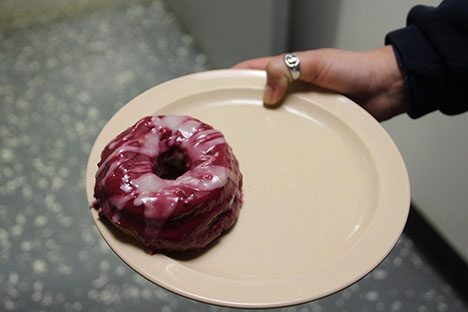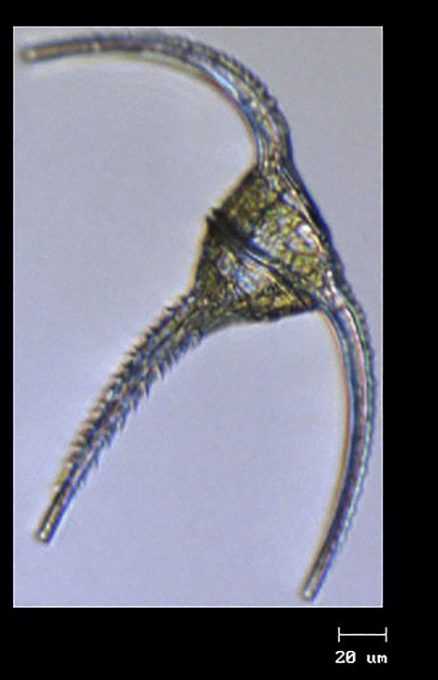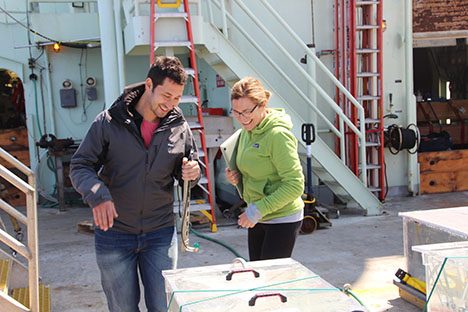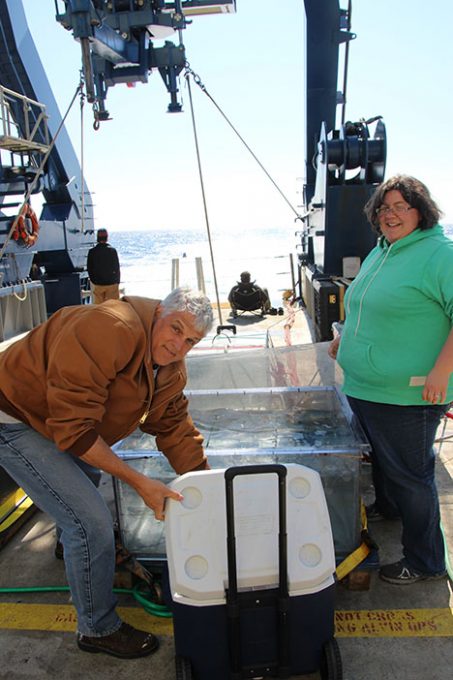Creature comforts
What does it take to be comfortable on a ship? Good food? Check. A cozy cabin? Check. Diligent captain and crew? Check. We are very comfortable on our ride out to our first station, anticipated on Tuesday evening, May 17th. Before then, we have to cross a field of icebergs which excites the tourist in some of us but puts considerable uncertainty in our planning as we do not know how quickly we can progress through the iceberg area. Such uncertainty is completely standard on a research vessel, so we are indeed all in good spirits and very comfortable.

Creature comforts abound – Saturday is homemade donut day! Photo: Susanne Menden-Deuer
However, I was not really concerned with human creature comforts, but rather wanted to relate the great lengths we go to, to make sure the plankton we sample are comfortable! Plankton are microscopic organisms that are key to making Earth habitable. Like organisms on land, some plankton act like animals, eating others and some plankton are more like plants. Together, plankton provide the fish and seafood some of us like to eat and make about 50% of the oxygen we breathe. So every other breath you take, a ‘Thank you plankton’ is in order. We study these microbes because although they are small, they are more numerous than the stars in the heavens. There are literally millions in a drop of water. A number of researchers on the ship are out here to understand how fast plankton grow, eat, and die. Since they are so small, and the water moves so quickly, we need to bring the plankton aboard and fool them into hopefully behaving like they would in the ocean.

Image of a Ceratiun sp., a large dinoflagellate, sampled just south of Newfoundland as the RV Atlantis transits to the first station of the NAAMES-II mission. Photo: Françoise Morison
We don’t really know all that is necessary to make a plankton comfortable, but we know it is essential to maintain the same light and temperature as where they were sampled from – similar to how you would treat your pet turtle. To keep the plankton happy, we have brought a bunch of clear, plastic boxes that are hooked up to the ship’s seawater system to maintain temperature. Then we wrapped the incubators with mosquito screen (like you have in your home) to shade the inside. It gets darker the deeper you go in the ocean and so by wrapping the incubators with multiple layers, we reproduce the different depths we sample. And then we do a bunch of testing of the plankton themselves before and after our experiments to make sure that indeed they were happy and healthy. Too bad you can’t ask the plankton directly how they are doing but starting with our first trial experiment last night (Friday 13 May), we have begun the dialogue.

All set up – the incubators are wrapped and strapped down for transit (with Françoise Morison), Photo: Susanne Menden-Deuer

Making sure the light inside is right, Dr. Andreas Oikonomou and Françoise Morison installing a light sensor. Photo: Susanne Menden-Deuer

Drs. Craig Carlson (left) and Elizabeth Harvey (right) loading samples into the incubators. Photo: Susanne Menden-Deuer
Written by Susanne Menden-Deuer




Great explanation of what the phytoplankton are all about!
What is food how is you!